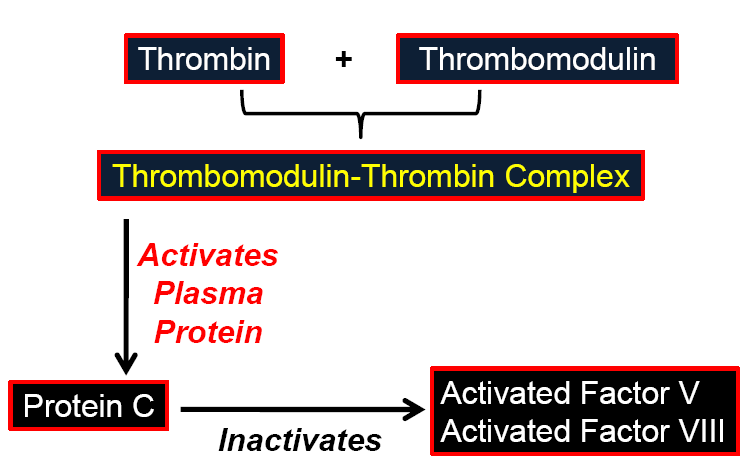Anticlotting mechanisms include intravascular anticoagulants, thrombin removal from blood, heparin and clot lysis. These are explained one by one, followed by common associated disorders.
Intravascular Anticoagulants
There are three intravascular anticoagulant mechanisms:
1. Smooth endothelial cell surface
Smooth endothelial cell surface prevents activation of intrinsic clotting system
2. Glycocalyx layer on endothelium
It repells clotting factors & platelets
3. Thrombomodulin
Thrombomodulin is a protein bound with endothelial membrane. It binds thrombin to prevent clot formation.
Thrombin Removal from Blood
Thrombin removal from blood is mediated by:
1. Fibrin fibers
2. Antithrombin III ( Antithrombin-Heparin cofactor)
85 –90% of thrombin is bound to fibrin, which prevents spread of thrombin. Remaining amount is bound to antithrombin-III.
Heparin
Heparin is a powerful anticoagulant, present in low concentration in blood. It is released by mast cells and basophils. It is a highly negatively charged conjugated polysacharide.
Heparin + Antithrombin III complex has 100 fold increase in effectiveness. Removal of thrombin and activated factors XII, XI, X, IX take place.
Clot Lysis
Clot lysis is mediated by:
1. Plasminogen (Profibrinolysin) –which is a euglobulin
2. Proteolytic enzyme –which resembles trypsin
They digest:
- Fibrin fibers
- Fibrinogen
- Factor V
- Factor VIII
- Prothrombin
- Factor XII
Excessive Bleeding
Excessive bleeding may occur in following disorders:
- Vitamin K deficiency
- Hemophilia
- Thrombocytopenia ( ↓Platelets)
- Liver Disease e.g. hepatitis and cirrhosis
Vitamin K
Vitamin K is involved in formation of 5 clotting factors:
- Prothrombin
- Factor VII
- Factor IX
- Factor X
- Protein C
Hemophilia
Hemophilia is X-linked recessive disorder. Hemophilia A (Classic Hemophilia) occurs in 85% of cases, in which there is deficiency of factor VIII.
Factor VIII has 2 components:
1. Large component which has molecular weight in millions, and is involved in von Willebrand’s disease
2. Smaller component which is important in intrinsic pathway
Thrombocytopenia
Thrombocytopenia is the low platelet count due to which bleeding occurs from small venules and capillaries. Punctate hemorrhages and purplish blotches are seen.
Bleeding occurs when platelet count decreases below 50,000/μl. Below 10,000/μl, it can be lethal.
Idiopathic Thrombocytopenia
Antibodies against platelets are formed in this disorder. Treatment involves fresh whole blood transfusions and spleenectomy.
Thrombi & Emboli
Thrombus is an abnormal clot in blood vessel.
Embolus is a freely floating clot.
These are formed by roughened endothelial surface of vessel and slow blood flow through vessels.
Femoral vein thrombosis is most important, which may lead to massive pulmonary embolism
Disseminated Intravascular Coagulation
Large amounts of traumatized / dead tissue in body or widespread septicemia by bacterial endotoxins, leads to release of large amounts of tissue factor. Due to this, small vessels are plugged leading to oxygen deprivation of tissues resulting in:
- Septicemic shock
- Spontaneous bleeding
 howMed Know Yourself
howMed Know Yourself


